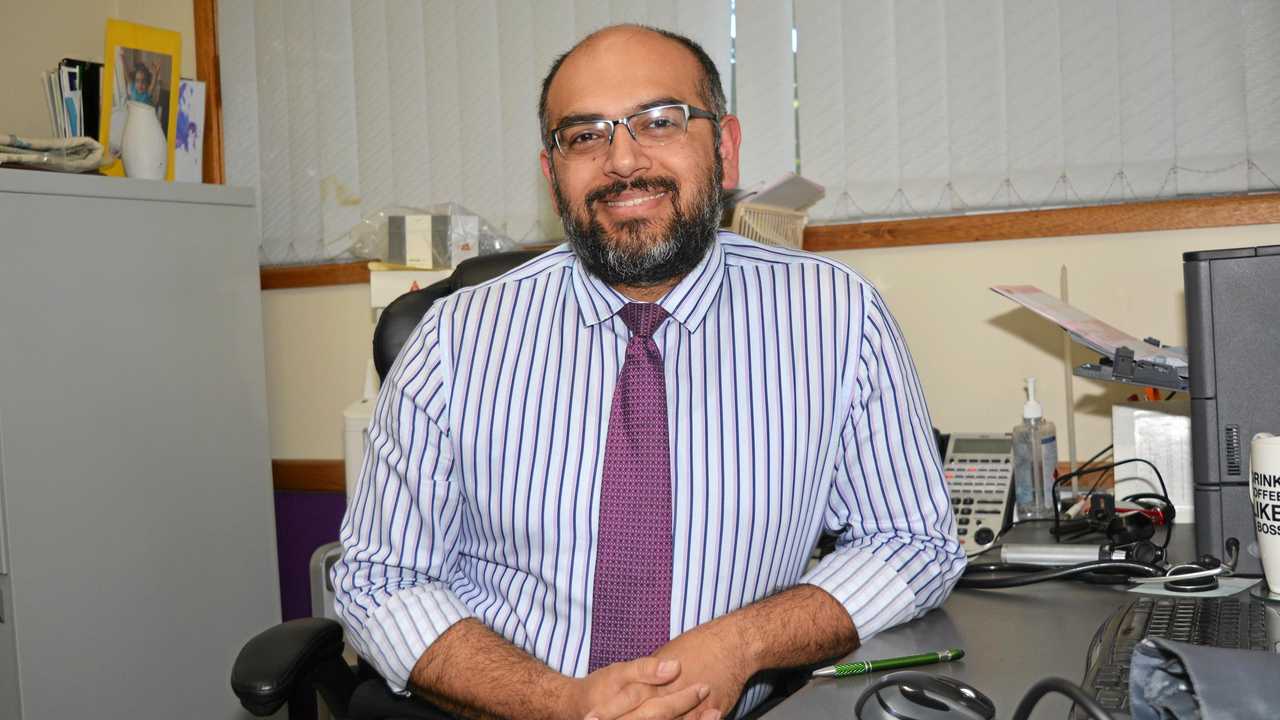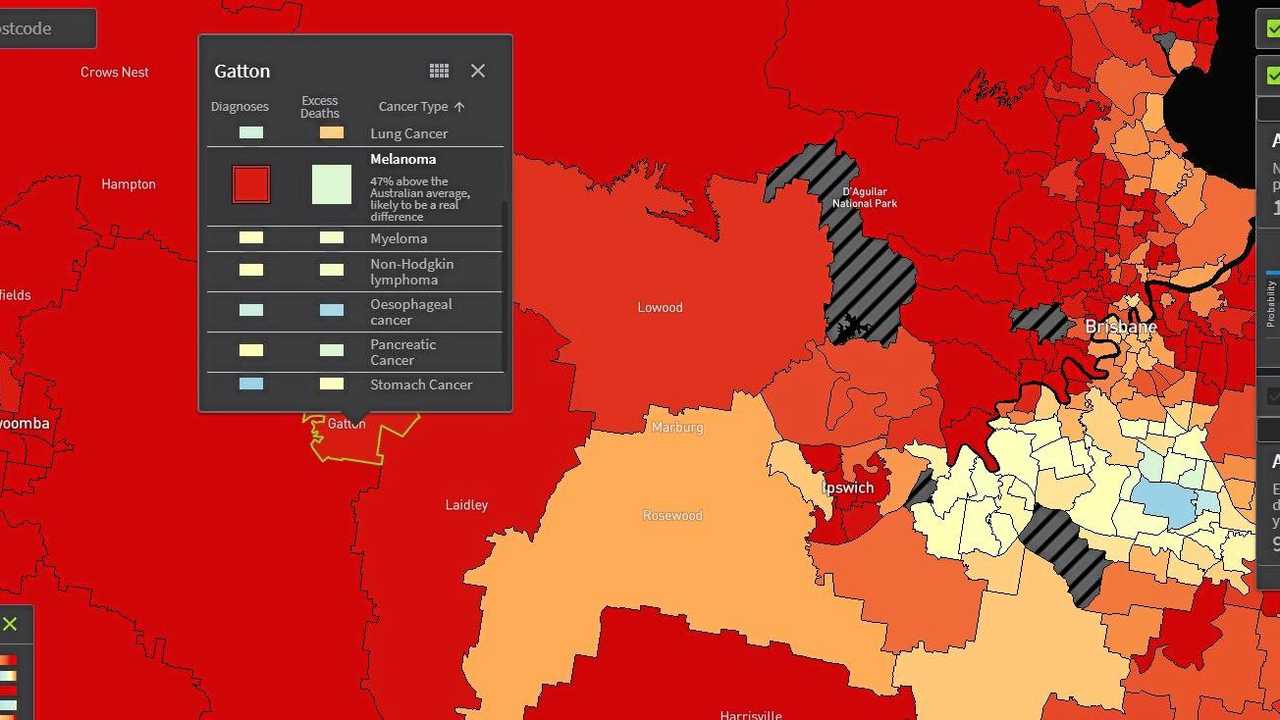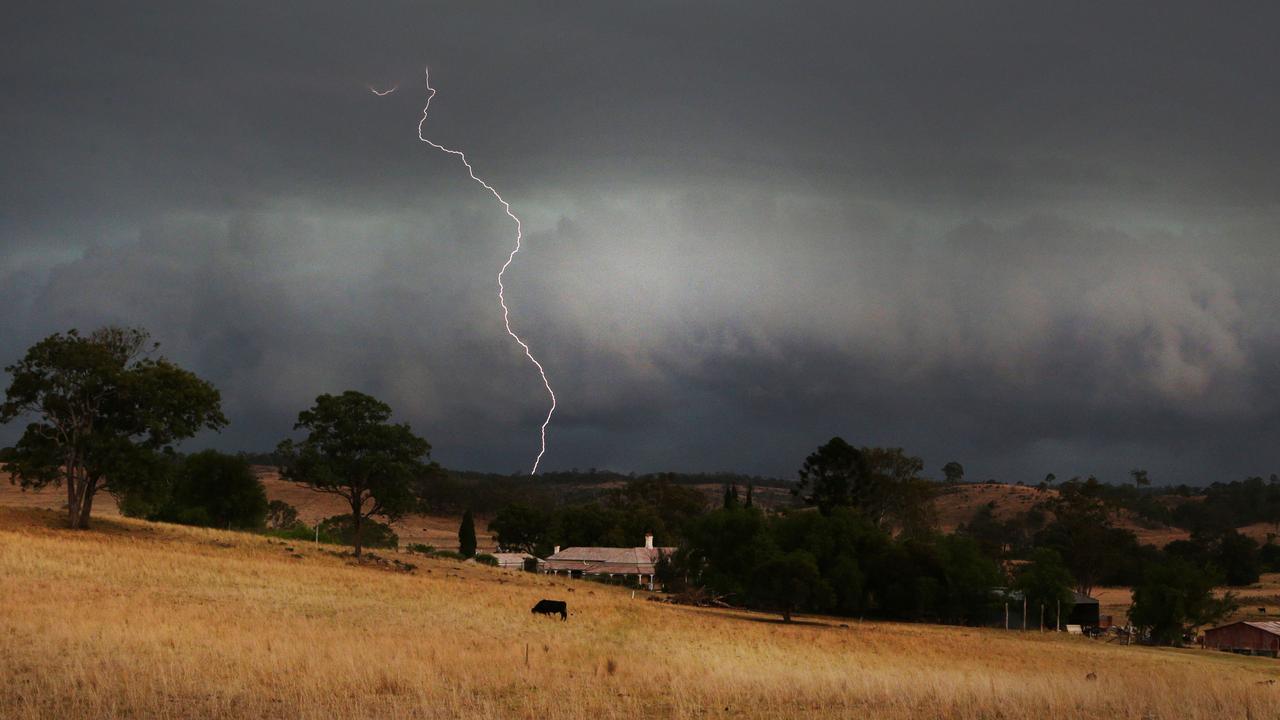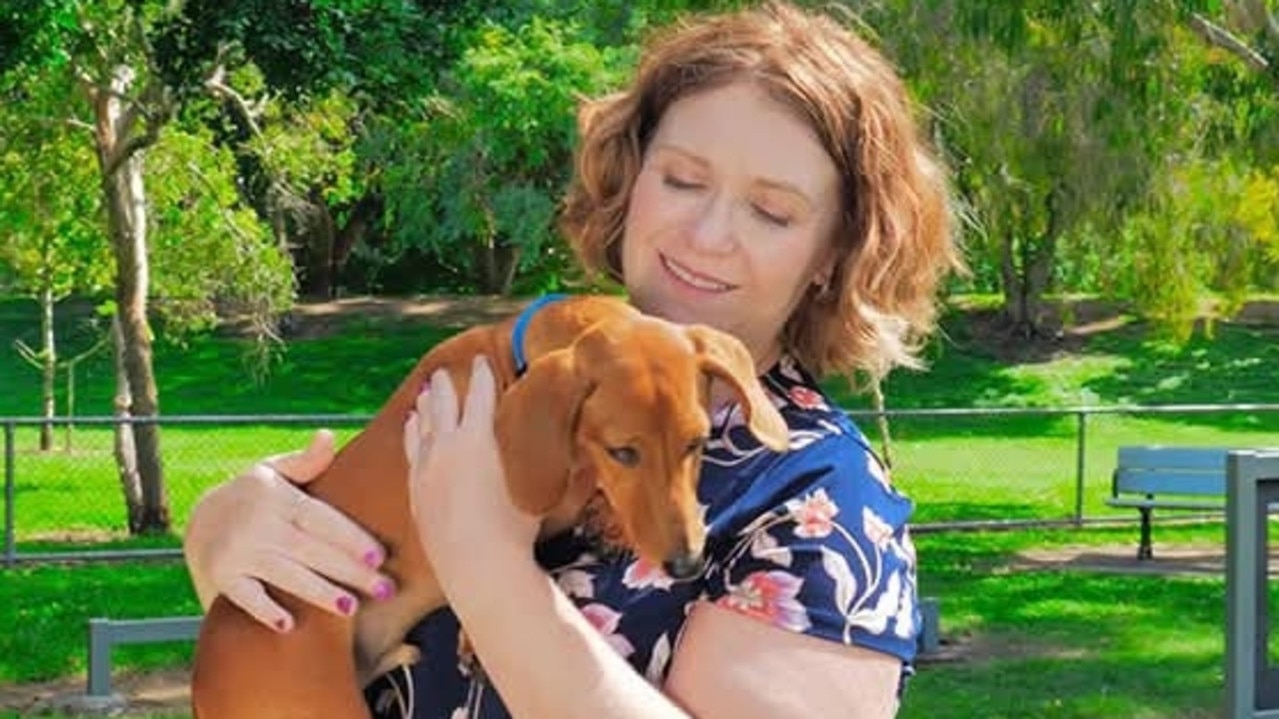Australia's cancer patterns revealed on interactive atlas
Southeast Queensland was recorded to have one of the highest rates of melanoma, with diagnosis in Gatton 49per cent higher than the Australian average

Gatton
Don't miss out on the headlines from Gatton. Followed categories will be added to My News.
AUSTRALIA'S worst cancer hotspots have been revealed on an interactive digital atlas identifying patterns of cancer incidence and survival rates.
The Cancer Council technology allows Australians to determine the severity of 20 cancers by suburb or postcode.
Cancer Council Queensland CEO Chris McMillan said the data highlighted the cancer divide on a geographical basis.
"This project builds on years of work by Cancer Council Queensland to better understand the cancer divide between metropolitan and rural areas, and map the gaps linked to socio-economic status and other demographic factors,” MsMcMillan said.
"In 2018 an estimated 138,000 Australians will be diagnosed with cancer, but we know that some people face greater risks of diagnosis and death than others, due to a mix of lifestyle, behaviour, genetics and other unknown factors.”
Southeast Queensland and northern New South Wales were recorded to have the highest rates of melanoma, with diagnosis in Gatton 49per cent higher than the Australian average.
Lockyer Valley Medical Centre practice principal Usman Khan said the data was not a surprise.
"This belt in southeast Queensland between Brisbane and the Darling Downs area seems to have the highest rate of melanoma,” Dr Khan said.
"Lifestyle factors play a huge part. There's still a lot of people that go out in the sun without a wide hat, they wear a cap and think that's protective but the top of the ears and back of the neck ... get a lot of exposure.”

Melanoma diagnosis in the east of the Lockyer Valley was also high, with rates 49per cent above the Australia average.
But excess deaths were 10per cent lower than the Australian average in Lockyer Valley east and 6per cent lower in Gatton.
Mr Khan said survival rates could be credited to a growing awareness of skin cancer.
"We are finding melanomas a lot earlier so rate of deaths are probably going down for that reason, which is a good thing, but we are still finding a lot of them.”
While the atlas showed the rates of cancer in each area, Cancer Council Queensland head of research Professor Joanne Aitken said local cancer trends didn't necessarily reflect cancer risk.
"Regardless of what is happening in our local area, we should each feel empowered to reduce our cancer risk by not smoking, being SunSmart, maintaining a healthy weight, reducing alcohol intake, exercising regularly, eating a healthy diet and getting checked.”
Find the cancer atlas at atlas.cancer.org.au/app.
Healthy lifestyles help to reduce the risks
CANCER statistics for Gatton are grim when it comes to head and neck cancers.
But Lockyer Valley Medical Centre practice principal Usman Khan says people can actively prevent being affected by cancer.
"Lifestyle factors including smoking, chemical exposure and sun exposure play a huge part in cancer development,” Dr Khan said.
New technology shows head and neck cancer diagnosis in Gatton is 74per cent higher than the Australian average.
The data comes from a cancer atlas that shows the impact of cancer in each geographical region.
"At the end of the day, even people who go through cancer treatment survive a lot better if their general life and general health is a lot better in the first place,” DrKahn said.
"Having a good, healthy, nutritious diet and regular exercise and good health generally is important.”
Dr Khan said smoking was one of the biggest causes of cancer in the neck and head category, with the smoke detrimentally affecting the thyroid, voice box and mouth.
It is estimated 48,000 Australians will die from cancer in 2018, according to the Cancer Council, with those in very remote areas 1.2times more likely to die from all cancers combined.
Cancer Council Queensland senior research fellow Professor Peter Baade said excess death rates for many cancers continued to be higher in rural and remote areas.
"There is still a long way to go to understand the reasons for all the geographic disparities, but the atlas is designed to motivate and accelerate the pace of targeted research in areas that need it the most,” Prof Baade said.
But in Gatton, despite being 74per cent above the Australian average for number of diagnoses, deaths caused by the disease in the head and neck are only 11per cent above the average.
Dr Khan said this could be due to detection by rapidly developing technologies.
"The detection technologies have improved massively,” he said.
"Right now we have quite quick access to CT scans and MRI scans that we can get onto these things straight away rather than having weeks and months for these investigations to happen.”
While it was noted genetics play a large role in cancer susceptibility, experts urge people have regular check-ups to increase their chance of early detection.
Originally published as Australia's cancer patterns revealed on interactive atlas






